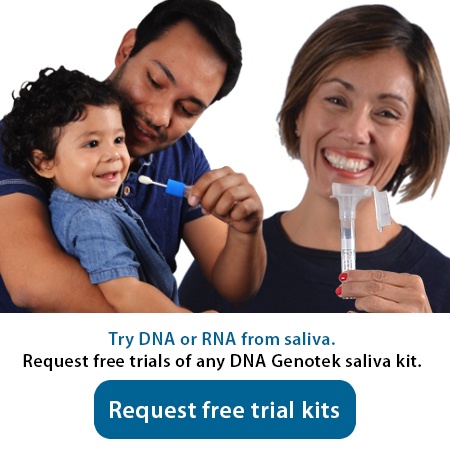2012-08-07
DNA is extracted from human saliva for a variety of reasons including molecular or forensic analysis. There are many benefits associated with collecting DNA from saliva with Oragene® kits such as non-invasive collection, high quality DNA and long-term storage at ambient temperatures. Once collection of the samples is complete, DNA extraction becomes a key stage in the processing of samples within most genomic laboratories. Challenges with DNA extraction can have an impact on downstream assay performance and even if you’re not having challenges, it’s always nice to find some information that might improve your technique. In this article, we focus on low-throughput DNA extraction methods from samples collected with Oragene. Low-throughput processing typically refers to manual processing of samples although there are also several automated platforms that process small batches of samples.
Amid the bewildering range of DNA preparation kits available, you can find what you need faster if you define the scale at which you will be purifying the genomic DNA and the quality/quantity of DNA that is required as input for your analysis method. Choosing the appropriate method should take into consideration the intended use of the DNA (downstream application) and should also be easy to use, economical and rapid. Finding a genomic DNA extraction kit that meets all these requirements maximizes both efficiency and analysis success.
Choosing the appropriate method
When manually processing Oragene samples, there are many extraction methods and chemistries to consider, including ethanol precipitation (i.e. prepIT•L2P or Puregene), spin columns (prepIT•C2D mini prep kit or Qiagen columns), magnetic beads (Promega Magazorb) or less commonly, phenol chloroform. We evaluate each of these below.
Ethanol precipitation:
Ethanol precipitation is best when your primary objective is to obtain the most DNA possible from your Oragene/saliva sample. This might be the case if you are looking to bank the DNA or if you are using downstream assays that have a very high input requirement (> 10 µg). Another benefit of ethanol precipitation is that it is scalable so it is easy to extract either a single aliquot or a full 4 mL sample.
Columns or magnetic beads:
Columns or magnetic beads are best when you are looking to purify an aliquot of sample as consistently and cleanly as possible. These technologies are particularly helpful if you are looking for repeatability or if your downstream assay is susceptible to carry-over of contaminants such as ethanol. Although these techniques are typically performed on a single aliquot of sample, it is also possible to scale by using a midi column or maxi column instead of a mini column.
Small batch automation:
For a more hands-off, low-throughput option, some technology manufacturers offer automated platforms that are geared towards small batches of samples. Some examples of these include the Maxwell 16 by Promega and the Chemagic MSM1 by Chemagen with a 12 rod head. Both of these use magnetic beads. The Maxwell can process up to 400 µL of sample whereas the Chemagic MSM1 can process an entire 4 mL Oragene sample.
In addition to offering our own prepIT family of DNA extraction kits that are optimized for Oragene samples, we have worked with most third party purification methods such as, Promega, Qiagen and Chemagen to ensure compatibility with their platforms and have application notes available for each of them. This provides our Oragene customers with the most flexibility in choosing their DNA extraction method.
The best choice for DNA extraction is usually the method that gets you the results you need in the simplest, fastest way. We hope this article highlights factors to help you make the best choice for your needs. Do you have any suggestions or guidance to offer on choosing the best method for DNA extraction? Share it with us by leaving a comment below.
It is becoming more common in many laboratories to think about automating the repetitive steps associated with isolating gDNA. While this first article in our series on DNA extraction focused on low throughput DNA extraction, watch in coming weeks for a follow-up article on high throughput DNA extraction. Subscribe to our blog to be sure you don’t miss these articles.


